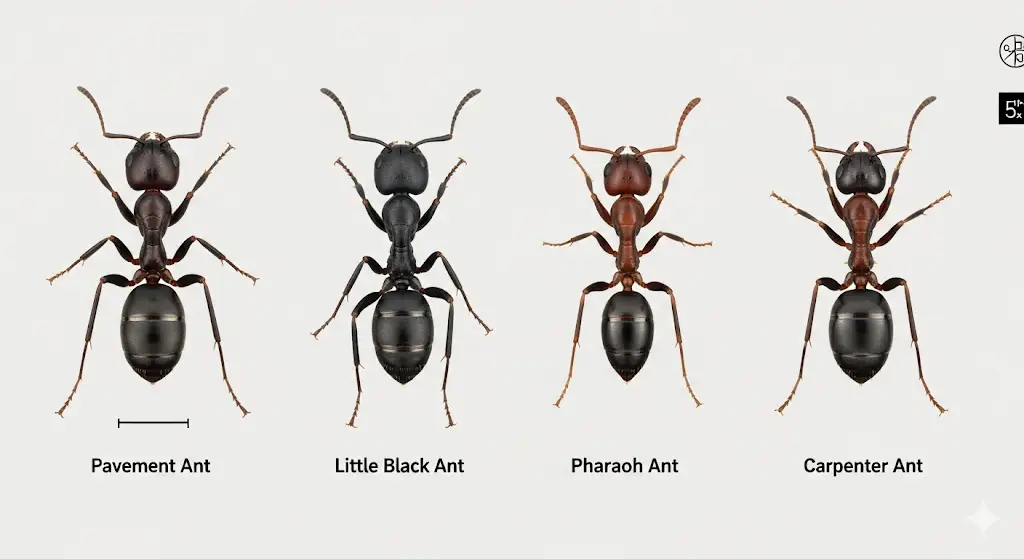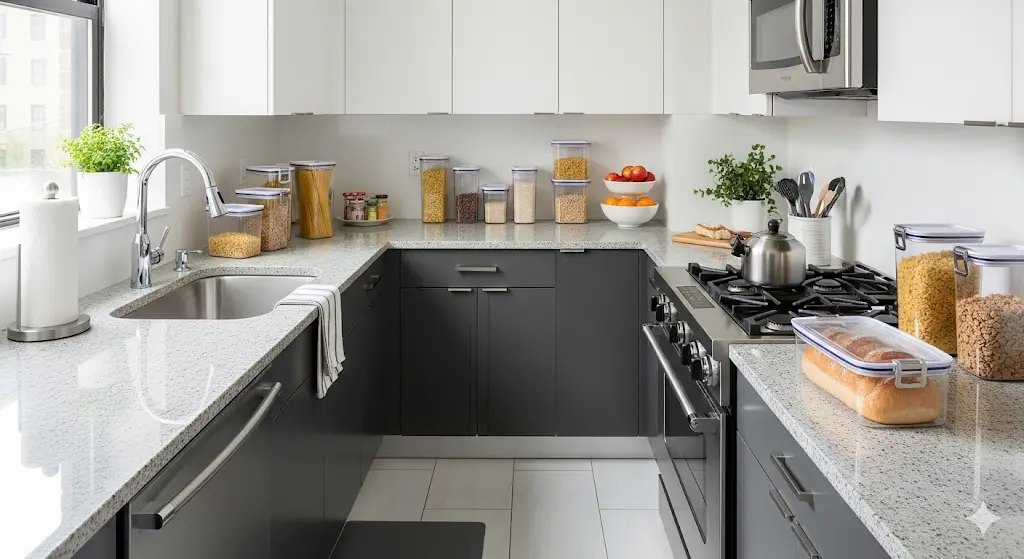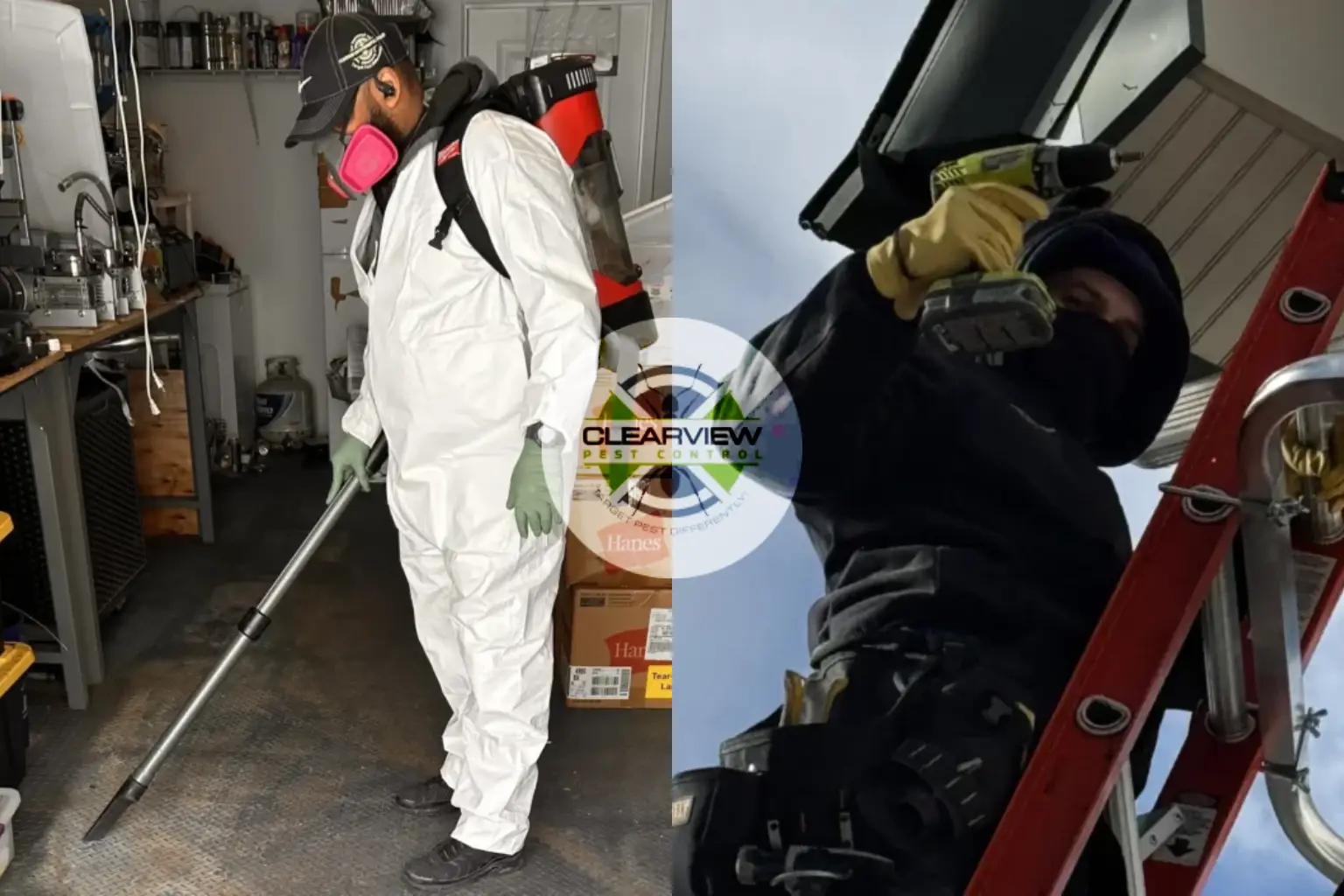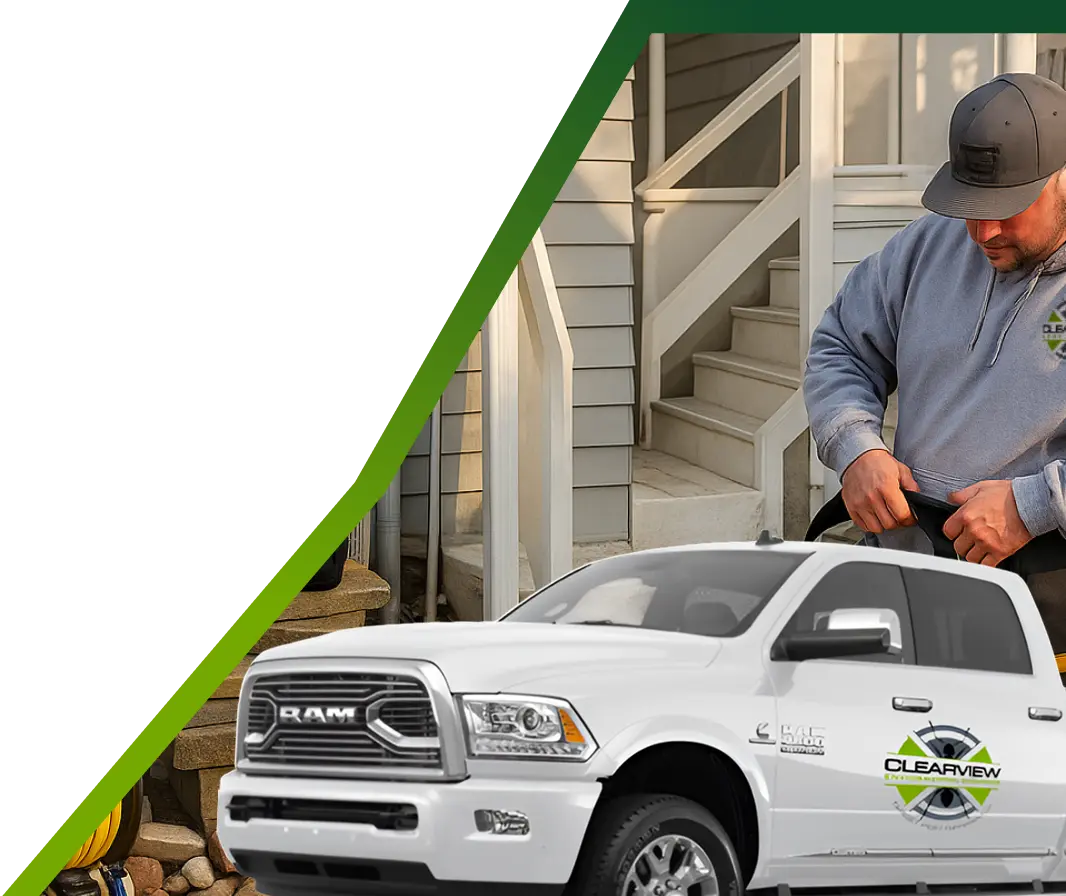Hoboken residents know that living in one of New Jersey’s most densely populated cities comes with unique challenges—and ant infestations top the list of persistent household problems. The combination of historic brownstones, modern high-rises, and waterfront humidity creates perfect conditions for ant colonies to establish and thrive throughout the year.
Kitchen invasions represent the most frustrating aspect of Hoboken’s ant problem. These industrious insects can transform a pristine cooking space into a battleground overnight, contaminating food supplies and creating unsanitary conditions that threaten family health. Understanding why Hoboken kitchens attract ants and implementing effective prevention strategies can save homeowners thousands of dollars in food waste and professional treatment costs.
The key to successful ant control lies in understanding the specific species common to Hoboken, recognizing early warning signs, and implementing comprehensive prevention measures before full-scale invasions occur.
Understanding Hoboken’s Unique Ant Challenge
Hoboken’s distinctive urban environment creates ideal conditions for multiple ant species, making the city one of New Jersey’s most ant-prone communities. Several environmental factors converge to make ant control particularly challenging for local residents.
Geographic and Environmental Factors
Hudson River Proximity: The waterfront location creates consistent humidity levels that many ant species require for successful reproduction and colony expansion.
Dense Urban Heat Island: Concrete and asphalt surfaces absorb and retain heat, creating warm microclimates that extend ant activity seasons well into fall and winter months.
Historic Building Stock: Many of Hoboken’s iconic brownstones and converted industrial buildings feature aging infrastructure with numerous cracks, gaps, and entry points that ants exploit.
High Population Density: Concentrated residential living creates abundant food sources and waste materials that sustain large ant populations.
Limited Green Space: Reduced natural habitat forces ant colonies to seek shelter and resources in residential and commercial buildings.
Transportation and Commerce Impact
Hoboken’s role as a major transportation hub brings constant opportunities for ant introduction through:
- PATH Station Traffic: Daily commuter flow can introduce ants from Manhattan and other infested areas
- Port Activities: Commercial shipping operations along the waterfront facilitate ant species introduction
- Restaurant Density: Washington Street’s extensive dining scene creates numerous food sources and attraction points
- Delivery Networks: Constant food and package deliveries provide hitchhiking opportunities for ant colonies
Common Ant Species in Hoboken Kitchens

Successful ant control requires accurate species identification, as different ants respond to different treatment approaches and have varying behavioral patterns that affect prevention strategies.
Pavement Ants (Tetramorium caespitum)
Identification Characteristics:
- Small, dark brown to black color
- Approximately 1/8 inch in length
- Parallel grooves on head and thorax
- Small spines on back portion of thorax
Hoboken-Specific Behavior:
- Nest under sidewalks, building foundations, and basement slabs
- Create distinctive small soil piles near entry points
- Most active during warm weather but can remain active indoors year-round
- Form large colonies with multiple queens (polygynous)
Kitchen Invasion Patterns:
- Enter through foundation cracks and basement access points
- Prefer greasy and protein-rich foods
- Establish long-lasting trail systems to reliable food sources
- Can contaminate large areas due to their persistent foraging behavior
Little Black Ants (Monomorium minimum)
Physical Description:
- Very small (1/16 inch) with shiny black coloration
- Twelve-segmented antennae with distinctive clubs
- Single-node petiole connecting thorax and abdomen
Hoboken Habitat Preferences:
- Nest in wall voids, under flooring, and in wooden structures
- Particularly common in older buildings with wood construction
- Prefer areas with slight moisture but not excessive humidity
- Often establish satellite colonies throughout connected building units
Kitchen Activity Signs:
- Form visible trails along baseboards and countertops
- Attracted to sweet substances, crumbs, and pet food
- Can quickly mobilize large numbers when food sources are discovered
- Often appear suddenly in large groups without obvious entry points
Pharaoh Ants (Monomorium pharaonis)
Distinctive Features:
- Light yellow to reddish color with darker abdomen
- Very small size (1/16 to 1/8 inch)
- Two-node petiole with club-shaped antennae
Urban Adaptation:
- Thrive in heated buildings year-round
- Require consistent moisture and warmth
- Form super-colonies with multiple interconnected nests
- Cannot survive outdoors in New Jersey climate
Kitchen Contamination Risks:
- Attracted to protein sources, sweets, and oils
- Can transmit bacteria and pathogens due to foraging in unsanitary areas
- Extremely difficult to eliminate due to colony structure
- Often spread between apartment units through shared infrastructure
Carpenter Ants (Camponotus species)
Size and Appearance:
- Large ants (1/4 to 1/2 inch) with black or dark brown coloration
- Single-node petiole with evenly rounded thorax profile
- Strong mandibles designed for wood excavation
Structural Concerns:
- Excavate galleries in wood structures, potentially causing damage
- Prefer softened or moist wood but can attack sound timber
- Often indicate moisture problems within building structures
- Parent colonies typically located outdoors with indoor satellite colonies
Kitchen Connection:
- Forage for protein and sweet materials
- Often enter kitchens while following moisture sources
- May indicate larger structural issues requiring professional assessment
- Can contaminate food while foraging from outdoor waste sources
Early Warning Signs: Catching Infestations Before Kitchen Invasion
Recognizing ant activity before full-scale kitchen invasions occur provides the best opportunity for effective, low-impact control measures. Hoboken residents should monitor for these early indicators:
Exterior Activity Indicators
Foundation and Entry Point Inspection:
- Small soil mounds near building foundations
- Ant trails along sidewalks leading toward your building
- Activity around basement windows and utility entry points
- Ants observed near garbage storage areas and dumpsters
Landscaping and Outdoor Areas:
- Ant colonies in potted plants or garden areas
- Activity near outdoor dining areas or grilling locations
- Trails along building perimeters, especially on sunny sides
- Increased activity around outdoor water sources
Interior Early Warnings
Bathroom and Utility Areas:
- Ants near plumbing fixtures seeking moisture
- Activity in laundry areas where humidity levels are elevated
- Sightings near pet food and water bowls
- Evidence of ant trails in basement or utility rooms
Transition Zones:
- Ant activity near doorways and windows
- Sightings along baseboards in rooms adjacent to kitchens
- Evidence of foraging in living areas with food consumption
- Ants observed near electrical outlets and wall penetrations
Seasonal Pattern Recognition
Spring Emergence (March-May):
- Increased outdoor activity as colonies become active
- Scouting ants exploring potential entry points
- Small numbers of ants appearing indoors intermittently
Summer Peak (June-August):
- Established trail systems between outdoor colonies and indoor food sources
- Consistent daily ant activity patterns
- Multiple species often active simultaneously
Fall Intensification (September-November):
- Increased indoor activity as outdoor food sources decrease
- Colony preparations for winter survival driving more aggressive foraging
- Higher likelihood of kitchen establishment as primary food source
Kitchen-Specific Attraction Factors in Hoboken Homes
Hoboken’s unique housing characteristics create specific kitchen conditions that are particularly attractive to ant colonies. Understanding these factors allows residents to implement targeted prevention measures.
Architectural Vulnerabilities
Historic Building Features:
- Original wood construction with natural gaps and expansion joints
- Aging mortar and masonry work with cracks and penetrations
- Original plumbing and electrical installations with numerous wall penetrations
- Hardwood floors with gaps that provide access routes
Modern Renovation Challenges:
- Kitchen updates that don’t address underlying structural ant access points
- New appliance installations that create gaps behind cabinets
- Modern insulation that provides nesting materials for certain ant species
- Updated plumbing that may create new moisture sources
Hoboken Kitchen Design Factors
Galley Kitchen Layouts:
- Narrow spaces that concentrate food preparation and storage
- Limited counter space leading to closer food storage to ant entry points
- Increased likelihood of crumbs and spills in confined areas
- Difficulty accessing areas behind appliances for cleaning and inspection
Open Floor Plans:
- Connected living and kitchen spaces that provide multiple access routes
- Increased food consumption areas throughout living spaces
- More complex cleaning and maintenance requirements
- Greater challenge in creating ant-proof zones
Climate and Seasonal Considerations
Humidity Management:
- Hudson River proximity creates consistent moisture levels
- Cooking activities in small spaces increase indoor humidity
- Poor ventilation in older buildings exacerbates moisture problems
- Winter heating systems can create dry conditions that drive ants toward kitchen moisture sources
Temperature Fluctuations:
- Historic buildings often have inconsistent heating
- Kitchen heat from cooking creates warm zones that attract ants
- Seasonal temperature changes affect ant activity patterns and kitchen invasion timing
Comprehensive Prevention Strategies

Effective ant prevention in Hoboken kitchens requires multi-layered approaches that address both immediate attractants and long-term structural vulnerabilities.
Sanitation and Food Management
Daily Kitchen Maintenance:
- Immediate cleanup of all food spills and crumbs
- Thorough cleaning of cooking surfaces after each use
- Regular sweeping and mopping of floors, including under appliances
- Daily removal of garbage using sealed containers
Food Storage Protocols:
- Transfer all opened packages to airtight containers
- Elevated storage of pet food and treats
- Regular rotation of stored goods to detect contamination early
- Secure storage of fruits and vegetables that can attract foraging ants
Deep Cleaning Schedules:
- Weekly cleaning behind and under appliances
- Monthly inspection and cleaning of cabinet interiors
- Quarterly deep cleaning of pantry areas with complete item removal
- Seasonal cleaning of hard-to-reach areas where crumbs accumulate
Moisture Control and Environmental Management
Water Source Elimination:
- Repair of leaky faucets and plumbing fixtures
- Proper ventilation during cooking and dishwashing activities
- Use of exhaust fans to reduce humidity buildup
- Regular cleaning and maintenance of dishwasher seals and drainage
Structural Moisture Issues:
- Address basement moisture problems that affect foundation areas
- Improve ventilation in areas prone to condensation
- Repair exterior issues that allow water infiltration near kitchen areas
- Install dehumidifiers in problem areas during humid seasons
Physical Exclusion Methods
Entry Point Sealing:
- Caulking gaps around plumbing penetrations
- Sealing cracks in baseboards and wall intersections
- Installing weather stripping on exterior doors and windows
- Screening basement windows and foundation vents
Barrier Creation:
- Installing door sweeps on exterior entrances
- Creating physical barriers around appliances
- Using expanding foam to seal larger gaps in wall voids
- Installing screens on utility openings
Safe Treatment Approaches: Clearview’s Integrated Methodology
When prevention measures are insufficient and ant infestations establish in Hoboken kitchens, professional treatment becomes necessary. Effective ant control requires species-specific approaches that prioritize family safety while achieving complete colony elimination.
Advanced Inspection and Assessment
Comprehensive Property Evaluation: Professional ant control begins with thorough inspection to identify species, locate colonies, map foraging patterns, and assess structural factors contributing to infestations.
Technology-Enhanced Detection:
- Moisture meters to identify areas with conducive conditions
- Thermal imaging to locate hidden colonies within wall voids
- Borescope inspections of inaccessible areas
- GPS mapping of exterior colonies and entry points
Targeted Treatment Strategies
Baiting Systems for Colony Elimination: Professional-grade ant baits provide delayed-action elimination that allows foraging ants to return to colonies and share toxic materials with queens and larvae, achieving complete colony elimination rather than just killing visible workers.
Species-Specific Bait Selection:
- Protein-based baits for pavement ants and carpenter ants
- Sweet baits for little black ants and pharaoh ants
- Oil-based baits for ants attracted to greasy food sources
- Rotation of bait types to prevent avoidance behaviors
Strategic Placement Protocols:
- Placement along established ant trails for maximum uptake
- Protection from non-target access while maintaining ant accessibility
- Monitoring and replacement schedules based on consumption patterns
- Documentation of bait performance for treatment optimization
Low-Impact Chemical Applications
Crack and Crevice Treatments: When baiting alone is insufficient, targeted application of residual insecticides in ant travel routes provides supplemental control without broad exposure risks.
Dust Formulations:
- Boric acid-based dusts for long-lasting control in wall voids
- Diatomaceous earth applications in dry areas where appropriate
- Silica gel formulations for moisture-prone areas
- Professional application to ensure proper placement and safety
Perimeter Treatments:
- Exterior foundation treatments to intercept outdoor colonies
- Targeted applications around entry points
- Moisture-resistant formulations for Hoboken’s humid conditions
- Minimal environmental impact while maintaining effectiveness
Habitat Modification and Exclusion
Structural Improvements: Professional ant control includes identification and recommendation of structural modifications that eliminate conducive conditions and prevent future infestations.
Integrated Exclusion Services: Comprehensive repairs and exclusions that address ant entry points while improving building integrity and energy efficiency.
Natural and Non-Toxic Prevention Methods
Many Hoboken residents prefer non-chemical approaches for kitchen ant control, particularly in homes with children, pets, or individuals with chemical sensitivities.
Physical Deterrent Methods
Diatomaceous Earth Applications:
- Food-grade diatomaceous earth creates physical barriers
- Effective against multiple ant species through mechanical action
- Safe for use around food preparation areas when properly applied
- Requires reapplication after moisture exposure
Essential Oil Repellents:
- Peppermint, tea tree, and lemon oils can deter ant activity
- Application along entry points and foraging routes
- Natural approach with pleasant household aromas
- Requires frequent reapplication for maintained effectiveness
Physical Barriers:
- Chalk lines containing calcium carbonate can deter some species
- Cinnamon and coffee grounds may provide temporary deterrence
- Petroleum jelly barriers around specific items or areas
- Double-sided tape to disrupt trail establishment
Cultural Control Methods
Landscape Management:
- Removal of ant-attractive plants near kitchen areas
- Elimination of moisture sources in outdoor areas adjacent to kitchens
- Regular maintenance of outdoor eating areas and grills
- Strategic placement of plants that naturally repel ants
Building Maintenance:
- Regular caulking and sealing maintenance schedules
- Prompt repair of plumbing leaks and moisture issues
- Seasonal cleaning of gutters and drainage systems
- Maintenance of exterior painting and weather barriers
Professional vs. DIY Ant Control in Hoboken
While some ant problems can be managed through diligent prevention and basic treatment measures, Hoboken’s challenging urban environment often requires professional expertise for complete resolution.
When Professional Treatment Becomes Necessary
Colony Size and Complexity:
- Multiple species present simultaneously
- Large colonies with satellite nests throughout the building
- Pharaoh ant infestations requiring specialized elimination protocols
- Carpenter ant activity indicating potential structural damage
Structural Challenges:
- Ants accessing kitchens through inaccessible wall voids
- Entry points located in areas requiring specialized equipment or expertise
- Building-wide infestations affecting multiple units
- Historic building features that complicate treatment approaches
Health and Safety Considerations:
- Households with vulnerable individuals requiring extra care
- Food contamination concerns in commercial kitchens
- Repeated treatment failures using over-the-counter methods
- Need for guaranteed results and ongoing protection
Professional Service Advantages
Species Expertise: Professional ant control specialists can accurately identify species and implement targeted strategies based on specific behavioral patterns and biological requirements.
Advanced Materials and Methods:
- Access to professional-grade baits and treatments unavailable to consumers
- Specialized equipment for precise application and monitoring
- Integration of multiple treatment methods for comprehensive control
- Long-term monitoring and adjustment capabilities
Comprehensive Solutions: Professional services address not only immediate ant elimination but also long-term prevention through structural improvements and ongoing maintenance programs.
Hoboken-Specific Treatment Considerations
Effective ant control in Hoboken requires understanding local building characteristics, environmental conditions, and regulatory requirements that affect treatment approaches.
Historic Preservation Considerations
Building Integrity Protection:
- Treatment methods that don’t compromise historic architectural features
- Careful consideration of materials and methods in landmark buildings
- Coordination with building management and preservation requirements
- Documentation of treatment activities for historical building records
Multi-Unit Building Coordination
Apartment Building Challenges:
- Coordination between multiple tenants for effective building-wide treatment
- Access requirements for comprehensive inspection and treatment
- Communication protocols for treatment scheduling and preparation
- Cost-sharing arrangements for building-wide ant control programs
Property Management Integration:
- Development of integrated pest management protocols for building operations
- Staff training for early detection and basic prevention measures
- Establishment of resident education programs about ant prevention
- Regular monitoring and maintenance schedules integrated with building operations
Environmental and Regulatory Compliance
New Jersey Pesticide Regulations:
- Compliance with state requirements for pesticide application in residential settings
- Proper licensing and certification for commercial treatment activities
- Documentation and record-keeping requirements for professional applications
- Integration with local health department requirements and inspections
Long-term Success and Maintenance
Achieving long-term ant control in Hoboken kitchens requires ongoing attention to prevention principles and periodic professional assessment to address changing conditions.
Seasonal Maintenance Schedules
Spring Preparation (March-April):
- Comprehensive exterior inspection for winter damage and new entry points
- Deep cleaning of kitchen areas after winter heating season
- Refresh of physical barriers and deterrent materials
- Professional inspection to identify developing ant pressure
Summer Monitoring (June-August):
- Increased vigilance during peak ant activity periods
- Regular inspection of outdoor areas and building perimeters
- Maintenance of moisture control systems during humid periods
- Quick response to any signs of increasing ant activity
Fall Prevention (September-October):
- Intensive sealing of entry points before winter ant seeking shelter
- Complete kitchen deep cleaning and food storage review
- Professional treatment if necessary before winter establishment
- Preparation of indoor prevention measures for heating season
Ongoing Assessment and Adaptation
Annual Professional Evaluation: Regular professional assessment ensures that changing building conditions, environmental factors, and ant population pressures are addressed before problems develop.
Treatment Plan Updates: Ant control strategies may need modification based on building changes, new construction in the area, climate variations, or changes in household composition and activities.
Prevention Protocol Refinement: Continuous improvement of prevention measures based on effectiveness monitoring and changing conditions ensures optimal long-term protection.
Protecting Your Hoboken Kitchen from Ant Invasion

Ant control in Hoboken represents a unique challenge that requires understanding of local conditions, species-specific behaviors, and integrated management approaches. The city’s dense urban environment, historic building stock, and waterfront location create perfect conditions for ant establishment, making prevention and early intervention absolutely critical.
Successful ant control combines diligent prevention measures, early detection protocols, and professional treatment when necessary. The key lies in understanding that ant control is not a one-time event but an ongoing process that requires consistent attention and periodic professional assessment.
Kitchen protection requires particular attention because these areas provide everything ants need to establish thriving colonies—food, moisture, warmth, and shelter. The confined spaces and complex infrastructure common in Hoboken homes can make DIY treatment challenging and often ineffective against established infestations.
At Clearview Pest Control, we understand the specific challenges that Hoboken residents face in maintaining ant-free kitchens. Our comprehensive ant control services are specifically designed for urban environments like Hoboken, where traditional treatment approaches often fall short due to building complexity and environmental factors.
Our integrated approach combines thorough inspection, species identification, targeted treatment, and structural improvement recommendations that address both immediate ant problems and long-term prevention needs. We recognize that kitchen areas require special care to ensure food safety while achieving complete ant elimination.
Whether you’re dealing with current ant invasions or seeking proactive protection for your Hoboken kitchen, professional expertise provides the security and effectiveness that comes from comprehensive solutions tailored to local conditions. Our 24-hour emergency response ensures that urgent ant problems receive immediate attention, preventing minor issues from becoming major infestations.
Don’t let ants compromise your kitchen’s safety and your family’s comfort. Contact Clearview Pest Control at (347) 224-2581 or visit our contact page to schedule a comprehensive ant assessment and consultation. Early intervention and professional expertise are your best defenses against Hoboken’s persistent ant challenges.
Take control of your kitchen’s ant risks today—your food safety, family comfort, and peace of mind depend on effective, professional ant control solutions that work in Hoboken’s unique urban environment.
Clearview Pest Control specializes in comprehensive ant control solutions for Hoboken residents, providing safe, effective treatments that protect kitchens and families while addressing the unique challenges of urban ant management in Hudson County’s dense residential environment.



